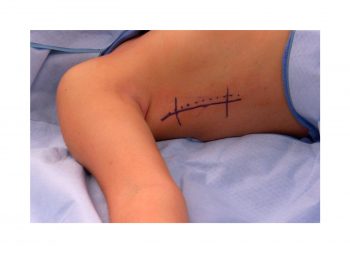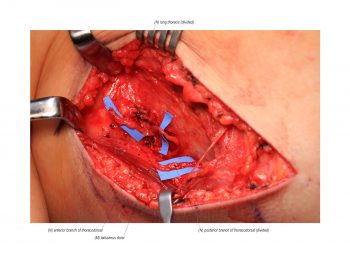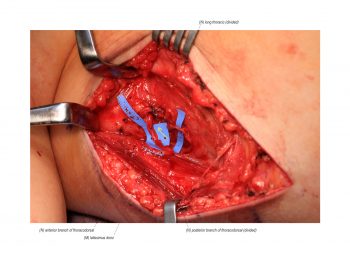Patients with long thoracic nerve injuries exhibit scapular winging and sever shoulder deficits that include the inability to forward flex the shoulder past 90 degrees of range of motion. Thoracodorsal to long thoracic nerve transfer utilizes a distal posterior branch of the thoracodorsal nerve to reinnervate the distal half of the long thoracic nerve. This operation occurs in the lateral aspect of the thorax. The distal half of the long thoracic nerve innervates the distal half of the serratus anterior, which inserts to the inferior angle of the scapula and provides scapular upward rotation during shoulder movements. A second procedure is used to reinnervate the proximal half of the serratus anterior. Together, the proximal and distal nerve transfers are known as the double-level nerve transfer for long thoracic nerve function.
Standard 110328
Extended 110328
POSITION
Supine.
INCISION
An incision along the medial aspect of the thoracic along the lateral aspect of the latissimus dorsi.
REFERENCES
- Novak CB, Mackinnon SE. Surgical treatment of a long thoracic nerve palsy. Ann Thorac Surg. 2002 May;73(5):1643-5. PMID: 12022573.
- Mackinnon SE, Novak CB. Nerve transfers. New options for reconstruction following nerve injury. Hand Clin. 1999 Nov;15(4):643-66, ix. Review. PMID: 10563268.
Disclosure: No authors have a financial interest in any of the products, devices, or drugs mentioned in this production or publication.


